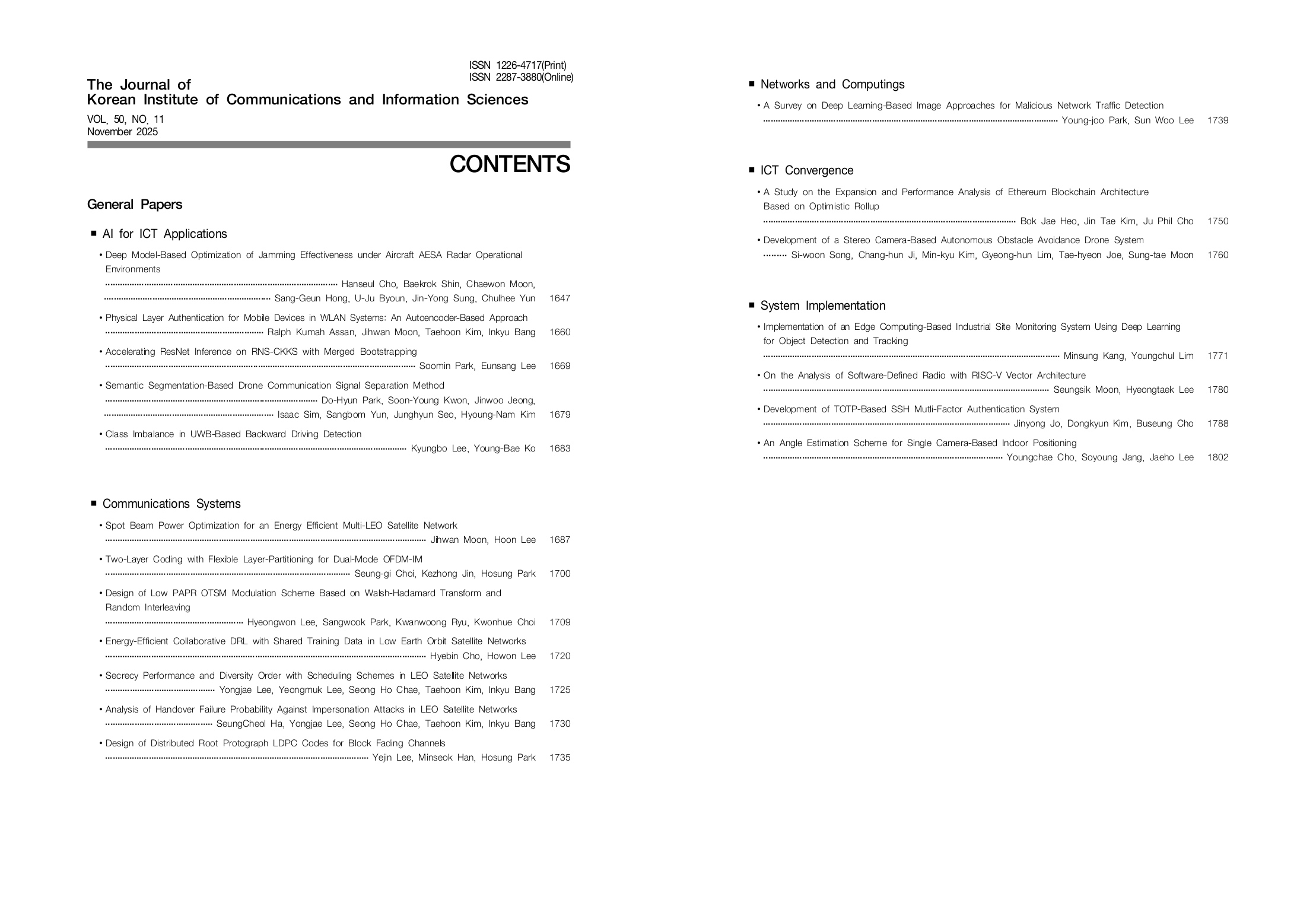Development of a Stereo Camera-Based Autonomous Obstacle Avoidance Drone System
Vol. 50, No. 11, pp. 1760-1770, Nov. 2025
 10.7840/kics.2025.50.11.1760
10.7840/kics.2025.50.11.1760
-
UAV (Unmanned Aerial Vehicle) Stereo camera Range Finder Obstacle Avoidance Autonomous Flight PX4-ROS2 Ground Segmentation
PDF Full-Text
Abstract
Statistics
Cumulative Counts from November, 2022
Multiple requests among the same browser session are counted as one view. If you mouse over a chart, the values of data points will be shown.
Multiple requests among the same browser session are counted as one view. If you mouse over a chart, the values of data points will be shown.
|
|
Cite this article
[IEEE Style]
S. Song, C. Ji, M. Kim, G. Lim, T. Joe, S. Moon, "Development of a Stereo Camera-Based Autonomous Obstacle Avoidance Drone System," The Journal of Korean Institute of Communications and Information Sciences, vol. 50, no. 11, pp. 1760-1770, 2025. DOI: 10.7840/kics.2025.50.11.1760.
[ACM Style]
Si-woon Song, Chang-hun Ji, Min-kyu Kim, Gyeong-hun Lim, Tae-hyeon Joe, and Sung-tae Moon. 2025. Development of a Stereo Camera-Based Autonomous Obstacle Avoidance Drone System. The Journal of Korean Institute of Communications and Information Sciences, 50, 11, (2025), 1760-1770. DOI: 10.7840/kics.2025.50.11.1760.
[KICS Style]
Si-woon Song, Chang-hun Ji, Min-kyu Kim, Gyeong-hun Lim, Tae-hyeon Joe, Sung-tae Moon, "Development of a Stereo Camera-Based Autonomous Obstacle Avoidance Drone System," The Journal of Korean Institute of Communications and Information Sciences, vol. 50, no. 11, pp. 1760-1770, 11. 2025. (https://doi.org/10.7840/kics.2025.50.11.1760)
Vol. 50, No. 11 Index



